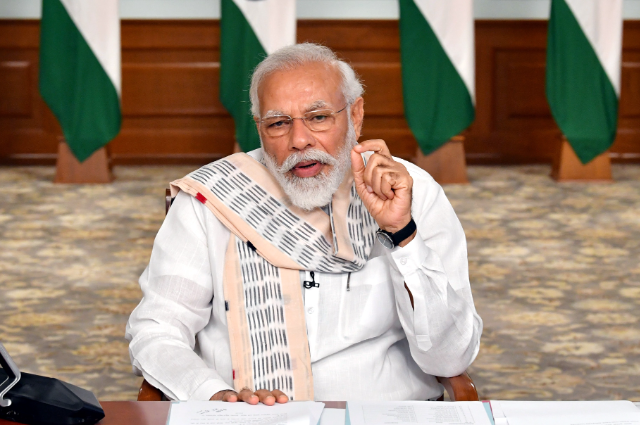Narendra Modi, the charismatic leader who transformed the BJP into India’s most dominant political force, is a name that sparks polarized debates. While his followers see him as a visionary and a beacon of hope, critics argue that his reign has deepened India's cracks—socially, politically, and economically. Beneath the glossy PR campaigns and grand speeches lie some uncomfortable truths. This article attempts to dissect these shadows with an unflinching gaze, exploring the darker facets of the BJP and Modi’s governance with sharp insights and compelling arguments.
1. From Gujarat to Delhi: The Art of Polarization
Narendra Modi’s ascent began in Gujarat, but so did the allegations of communal politics. The 2002 Gujarat riots remain an indelible stain on his political career, with critics accusing him of fostering a climate that allowed violence to spiral out of control.
"Unity in diversity sounds poetic, but in Modi's India, division is the anthem."
Polarization as a Strategy:
The BJP’s electoral playbook under Modi frequently hinges on communal divides. Subtle dog-whistles—"Love Jihad," "illegal immigrants," "Ram Mandir"—create an "us vs. them" narrative that fuels Hindu consolidation.
2. The PR Machinery: Branding Triumph Over Truth
If there’s one thing Modi excels at, it’s branding. From the “Chaiwala” narrative to global appearances, his image has been carefully curated.
"Modi’s genius isn’t solving problems—it’s convincing you they don’t exist."
Reality Behind the Hype:
Flagship schemes like Swachh Bharat and Digital India are more PR triumphs than policy successes. For example, rural toilets remain unusable without water supply, and digital initiatives often ignore the digital divide.
3. Authoritarian Tendencies: Democracy on a Leash
The BJP under Modi has been accused of hollowing out democratic institutions.
"Democracy thrives on dissent, but in Modi’s India, dissent is treason."
Erosion of Institutions:
From the judiciary to the Election Commission, critics allege systematic attempts to weaken institutional independence. For example, the CBI and ED are often accused of selectively targeting opposition leaders.
Crackdown on Media:
Freedom of the press is under siege, with journalists facing arrests, threats, and intimidation for criticizing the government.
4. The Economy: Promises vs. Reality
Modi came to power with promises of economic revival, but the ground realities tell a different story.
"Vikas (development) is Modi’s favorite word, but its meaning remains lost in translation."
Demonetization Debacle:
The sudden demonetization of 2016 disrupted lives, crippled small businesses, and failed to curb black money as promised.
GST Chaos:
The Goods and Services Tax, touted as a reform, became a bureaucratic nightmare for small businesses due to hasty implementation.
Wealth Inequality:
Under Modi, India’s billionaires have seen unprecedented growth in wealth, while unemployment and poverty remain critical issues.
5. Social Engineering: The Rise of Majoritarianism
The BJP’s vision of India leans heavily towards a Hindu nationalist narrative, sidelining minorities.
"In Modi’s new India, diversity is celebrated only if it looks saffron."
Anti-Minority Policies:
The Citizenship Amendment Act (CAA) and National Register of Citizens (NRC) sparked nationwide protests, with critics calling them discriminatory against Muslims.
Cow Vigilantism:
Mob lynchings in the name of cow protection have increased, with little to no action against perpetrators.
6. Foreign Policy: Grandstanding Without Strategy
Modi’s foreign policy is a tale of missed opportunities and blunders masked by photo ops with world leaders.
"Modi shakes hands globally while India’s borders bleed silently."
China’s Aggression:
Despite “strong leadership” rhetoric, China has been aggressive on India’s borders, particularly in Ladakh.
Alienating Neighbors:
Relations with Pakistan, Nepal, and Bangladesh have soured, making India’s neighborhood less stable.
7. Suppression of Dissent: Fear as a Weapon
Criticism of the BJP or Modi is often met with a ferocious backlash.
"Speak out, and you’re either anti-national or on their radar."
Targeting Activists:
Prominent activists, writers, and even students have been arrested on flimsy charges under draconian laws like UAPA.
Internet Shutdowns:
India leads the world in internet shutdowns, often used to silence protests in regions like Kashmir and during farmer agitations.
8. Environmental Neglect: Development at What Cost?
Modi’s development mantra often ignores environmental sustainability.
"Make in India, but break the environment."
Deforestation and Land Use:
Policies favoring industrial projects over environmental concerns have led to deforestation and displacement of indigenous communities.
Air Pollution Crisis:
Cities like Delhi are choking, but the government’s measures remain cosmetic.
9. Kashmir: Silence of the Valley
The abrogation of Article 370 in 2019 was hailed as a masterstroke by the BJP, but the reality in Jammu and Kashmir paints a grim picture.
"Kashmir was promised heaven, but it lives in a communication blackout."
Clampdown on Freedoms:
The region remains heavily militarized, with frequent internet blackouts and curfews.
10. Crony Capitalism: Who Benefits?
Modi’s proximity to big business houses has raised eyebrows.
"Acche Din arrived—for Ambani and Adani."
Privatization Push:
Public sector enterprises are being sold off, often benefiting a select few industrialists.
11. Education and Healthcare: Neglected Pillars
While Modi’s government spends billions on statues and temples, education and healthcare are severely underfunded.
"Bullet trains for the rich, crumbling schools for the poor."
Conclusion: The Contradiction of Modi’s India
Narendra Modi and the BJP’s rise is a masterclass in political strategy, but it comes at a cost. The promises of development, unity, and prosperity are overshadowed by a reality of polarization, suppression, and inequality. India’s democracy is resilient, but its future depends on whether it can rise above the divisive narratives that have taken root under the current regime.
In Modi’s India, the question isn’t whether the glass is half full or half empty—it’s who controls the glass and who gets to drink.

